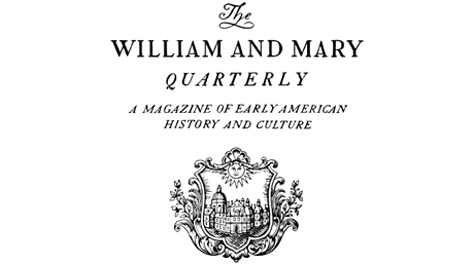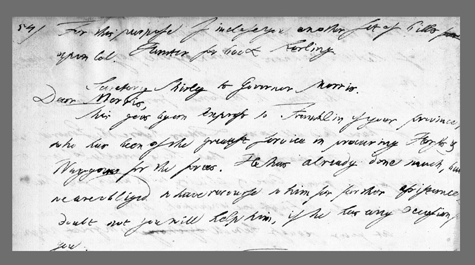W&M Quarterly makes national news
A scholar who discovered previously unknown letters from, to, and about Benjamin Franklin revealed his historic find in the April 2009 issue of the William & Mary Quarterly. The documents pertain to a 1755 episode in the French & Indian War. Press on the discovery has been wide-spread. Since the article appeared in the Quarterly, articles have run in the New York Times, LA Times, Philadelphia Inquirer, Fox News, the Chronicle of Higher Education and the Washington Post among other national news outlets.
“The documents are a super find,” said the Quarterly’s Visiting Editor Scott Casper. “It’s really first rate scholarship.”
Published for the first time the Quarterly, the documents shed light on a time during the French & Indian War known as “the wagon affair.” Alan Houston, professor of political science at the University of California, San Diego, unearthed the correspondence in the archives at the British Library in London while conducting research for his book, “Benjamin Franklin and the Politics of Improvement” in 2007.
Houston brought the story to the Quarterly because of its reputation, Casper noted.
“He submitted it to us because the William & Mary Quarterly is the best recognized journal of Early American History,” he said. “[Houston] wanted it published here.”
The finds have opened a unique window into early American history.
“As a contribution to the corpus of writings by and to Benjamin Franklin, these letters are intrinsically important,” Houston wrote in the Quarterly essay. “They introduce three new Franklin correspondents—the Reverend John Hamilton, Colonel John Innes, and Captain Robert Orme—and dramatically add to existing correspondence with men such as Edward Braddock and William Shirley Jr. … These letters also offer a wealth of new details that affect modern understanding of Benjamin Franklin, the wagon affair, and Pennsylvania politics.”
“It is one thing to find a single letter, but to find a whole conversation is stunning,” Casper said in an announcement about the discovery. “It’s a really great story that a diligent scholar who knows what he’s looking at can find what nobody saw.”
The William & Mary Quarterly is a publication of the Omohundro Institute for Early American History. The College of William and Mary and The Colonial Williamsburg Foundation founded the Institute of Early American History and Culture in 1943 and still jointly sponsor its work. Casper, who is the sabbatical replacement for William & Mary Quarterly Editor Chris Grasso, has been with the journal since July 1, 2008. His term will end June 30, 2009.
















